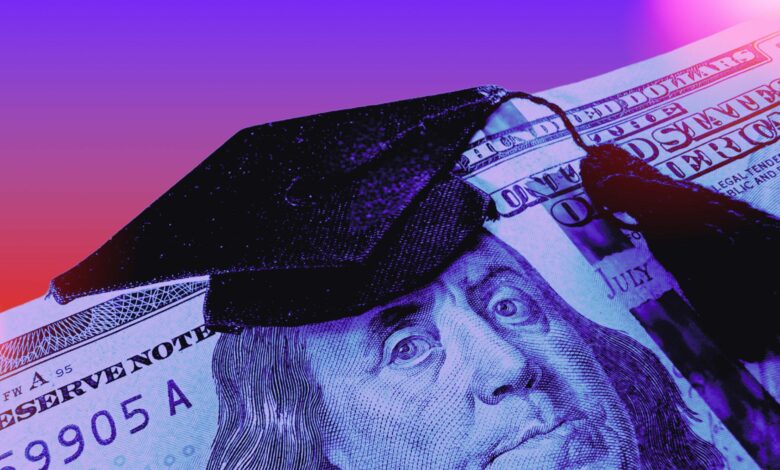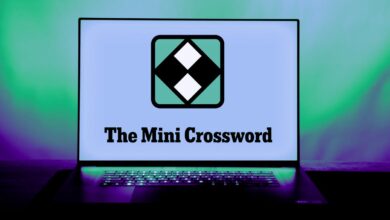How the Fed’s Rate Decisions Affect Student Loan Borrowers

Student debt is a burden for almost everyone 43 million borrowers in the US. For many, including myself, it is the price we pay for higher education.
I have federal student loans totaling about $27,000, and each monthly payment I make toward my debt includes interest. As I’ve been discussing the Federal Reserve’s recent policy decisions, I began to wonder how interest rate adjustments will affect future student borrowers. In my case, since I have a fixed interest rate of 4.5%, it won’t change over the life of the loan, regardless of what the Fed decides.
However, a small percentage of current borrowers with private (not federal) student loans have variable interest rates that fluctuate over time. Those borrowers could feel the knock-on effects of the Fed raising or lowering interest rates, just like future borrowers who plan to take out loans in the future.
When you’re taking out money to continue your education, it’s important to understand how government decisions can impact your finances. Here’s what I found out by talking to student loan experts.
At its July policy meeting, the Fed kept the federal funds rate, the benchmark rate that affects how much it costs banks to borrow money, unchanged. Interest rates have been rising since early 2022 as the Fed has sought to slow the economy and counter record-high inflation. Now that inflation has cooled, the Fed has pledged to cut interest rates. Experts are betting on at least one rate cut this year, as early as September.
How Student Loan Interest Works
First, the basics. Interest is the amount you pay as a borrower to take out a loan or use credit. Your interest rate plays a big role in determining the total amount you end up paying for your loan on top of the principal (the original amount you borrowed).
However, with student loans, there are several questions that can help you determine your interest rate and accrual timeline, including:
- Do you have a private or federal student loan?
- Do you have a fixed or variable rate?
- Is your loan intended for a bachelor’s or master’s degree?
- When did you take out the loan?
- Is your loan subsidized or unsubsidized?
Let’s start with loans you get directly from the government, also known as direct federal student loans.
Congress establishes the federal student loan interest in May of each year. The rates apply to new federal student loans issued from July 1 of the current year through June 30 of the following year. So even if you have a fixed-rate federal student loan, your rate could look different than your best friend’s, depending on the type of loan and when it was issued.
For example, if you took out an undergraduate Direct Loan in August 2020, at the height of the pandemic, you would have a fixed interest rate of 2.75%, while if you took out a graduate Direct Loan in August 2023, you would have a fixed interest rate of 7.05%. The higher the interest rate, the more you will owe over time.
These are the current fixed interest rates for federal student loans issued on or after July 1, 2024 and before July 1, 2025:
| Type of loan | Borrower | Fixed interest |
| Direct subsidized and direct unsubsidized loans* | Bachelor education | 6.53% |
| Direct Unsubsidized Loans | To graduate | 8.08% |
| Direct PLUS loans | Parents and graduate or professional students | 9.08% |
*With a Direct Subsidized Loan, interest begins to accrue once you leave school and your six-month grace period ends, while with a Direct Unsubsidized Loan, interest begins to accrue immediately (but you don’t have to make payments until after you leave school).
If you want to calculate how much interest you accrue each month, it’s a simple formula: Outstanding principal × (interest rate ÷ number of months in a year) = amount of monthly interest. My federal student loan has an outstanding principal of $27,000 and a fixed rate of 4.5%, so my loan accrues about $101 each month.
Federal Student Loan Borrowers: What You Need to Know
Student loan interest rates are complicated. But since nearly 93% of borrowers already have a federal student loan with a fixed interest rateIncluding myself, it will not affect our interest payments if the Fed decides to cut rates before the end of the year.
However, the Fed’s moves will still have consequences future federal borrowers (those who take out loans after July 1, 2025) since the government sets those rates once a year, said Robert Farrington, founder and CEO of The College Investor.
“If the Fed cuts rates, that could lower rates for the next school year,” Farrington said. Once a new rate is set in July 2025, all federal student loan borrowers will be locked into that new rate for the duration of their repayment term.
Private Student Borrowers: What You Need to Know
If you currently have private student loans with a variable, also called adjustable, rate, you could feel the effects of the Fed’s rate changes, says Mark Kantrowitz, a financial aid expert and member of the CNET Money Expert Review Board. “For private loans, if you opt for a variable-rate loan, you benefit from falling interest rates.”
While variable interest rates fluctuate based on market conditions, private lenders typically determine your personal rate based on a few factors, including your credit score, income, and financial history. Just like applying for any other line of credit, the better your financial health, the lower your interest rate will be. If you don’t have an established line of credit, using a trusted cosigner can help you get a lower rate.
Expert tips for students with a student loan
Before you do anything else, it’s important to know your balance and your interest rate. Log into your account through your student loan provider’s website and check your statement.
My loan is through Edfinancial and I have access to all my loan details through the ‘Account Summary’ tab. There I can see my loan type, balance, interest rate and more.
No one wants to end up with a mountain of student debt, so only borrow what you need and not as much as you can, Kantrowitz said. “Aim to have a total student loan debt that is less than your annual starting salary when you graduate.”
Kantrowitz also advises student borrowers to sign up for automatic repayment, which automatically transfers loan payments from your bank account to the lender. “A lot of lenders offer a small interest rate reduction as an incentive,” he said.
Finally, don’t forget to claim the student loan interest deduction on your federal income tax return when tax season rolls around. “It’s a cap on income exclusion for up to $2,500 in interest paid on federal and private student loans, which can save you a few hundred dollars on your taxes,” Kantrowitz says.
If you have high-interest private loans, you can refinance your loan after the Fed lowers rates. This could lower your monthly payment and interest charges.
However, refinancing federal student loans into private student loans will result in the loss of certain benefitsaccording to Farrington. This includes access to income-based repayment plans, loan forgiveness programs, and deferment or forbearance plans.
You can also consolidate federal loans if you have more than one with different interest rates. It will take a weighted average of all your total loans, but in some cases it can save you money.




